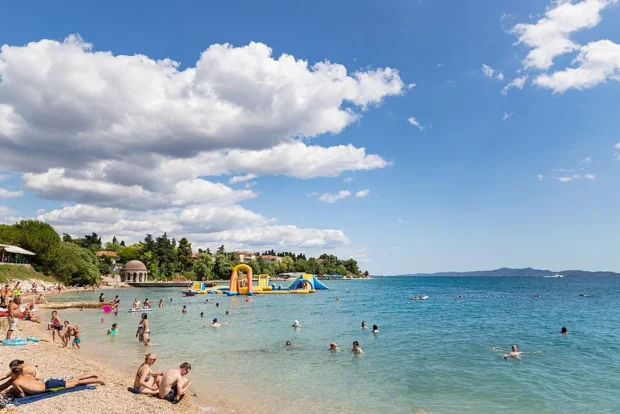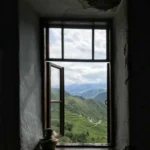Zadar is a city where the old meets the sea in a thoughtful embrace. If you have never heard much about Zadar Croatia, you are in for a surprise. This city is a place of sounds, stones, and stories. The sun sets here with a color that seems to come from another world. Walking through its streets, you find yourself surrounded by walls that tell tales of many centuries. This article will take you along for a gentle walk on Zadar’s streets, sharing what to see and feel, what to taste, and how to move around in this Croatian coastal town.
Table of Contents
Wandering Through Old Walls and Sea Songs
The Old Town of Zadar is a treasure of stone buildings that have spent hundreds of years watching the Adriatic Sea. Each wall and arch has a story, often mixed with myth. Did you know that the city has a Roman Forum from the time of Emperor Augustus? This open space was once alive with citizens of ancient times, and now it is a quiet place for a slow afternoon. Nearby, the Romanesque churches rise with their stone towers, reminding visitors of Zadar’s deep Christian roots.

One of the most charming features of the city is the Sea Organ (Morske Orgulje). This is not like any organ you have seen in a church. Built into the stone steps along the waterfront, the Sea Organ plays music made by the waves and wind. If you time your visit for sunset, you will hear melodies that seem to come from the sea itself, while the sun paints the sky with gold and purple. It is this blend of nature, art, and architecture that gives Zadar its special voice.
To continue your journey along the coast, explore Phuket Island and Phi Phi Islands for their stunning nature and vibrant island life.
For an architectural experience beyond the Adriatic, the Pantheon in Rome showcases ancient engineering marvels and craftsmanship worth noticing.
Close by is the Greeting to the Sun, a circle of colored glass panels that soak up the sunlight by day, and shine with light by night. Walking here, locals and visitors often stop, look down, and smile. This playful art piece connects the city’s past and present with the elements of nature in a dance of light and sound.

Finding Quiet Corners and Local Markets
Zadar has spots away from the crowds that invite the curious traveler to rest and watch daily life. The area called Varoš is a quiet neighborhood with narrow streets and small stone houses. Here, you can feel the rhythm of a slower pace, where neighbors greet each other warmly and time feels softer.
For a taste of daily life, visit the city’s market near the main bus station. It is a rich place full of fresh fruits, vegetables, fish straight from the sea, and homemade cheeses. Many local people come here early in the morning to buy groceries. It is a colorful and honest place, where you might chat with a friendly vendor about the season’s best food or the best places to eat nearby.

Where to Stay and Getting Around Zadar
Choosing where to stay in Zadar depends on what you want from your visit. If you love waking up surrounded by history, the Old Town has small guesthouses in charming buildings. They offer easy walking to major sights, cafes, and the waterfront. For a quieter night, neighborhoods outside the walls give a more local feel with calm streets and green spaces.
The airport serving Zadar is about 12 kilometers from the city center. From there, regular buses go straight into town, making travel easy and affordable. Buses also connect Zadar with other Croatian cities. Once in town, walking is the best way to explore the compact and friendly city. For longer journeys, local buses and ferries help you reach nearby islands and coastal towns.

Taste the Flavors of Dalmatia
Dalmatian cuisine is a part of the culture you should not miss. In Zadar Croatia, seafood dominates menus, but it carries the flavors of olive oil, herbs, and local vegetables. In the district near the port, small restaurants serve dishes like grilled fish, octopus salad, and black risotto made with cuttlefish ink. Each bite speaks of the sea and sun.
On the sweeter side, try the local fritule-small fried dough balls sprinkled with sugar, especially popular during festivals. A glass of Maraschino, a cherry liqueur made only in Zadar, will add a festive touch to your meal. This spirit has a story going back to the 16th century, cherished and made by local families, giving you a taste of Zadar’s heritage.

Customs and Ways to Connect with Locals
When talking to people in Zadar, a friendly greeting and a smile open many doors. Croatians are proud of their traditions and happy to share stories if you show respect and interest. It is polite to say “Dobar dan” (Good day) when entering shops or restaurants. Dining is often a social experience, so do not rush your meal.
One thing to remember: personal space is valued, so avoid standing too close when speaking. Also, asking before taking photos of someone is a good idea, especially in smaller neighborhoods or during religious events. These simple gestures will make your stay warmer and more memorable.

Discovering Stories in Every Stone and Song
Zadar’s charm is not just in its sights but in the everyday moments that visitors often miss. For example, near the city walls, stone benches carved long ago offer shaded resting spots where older men play chess while children play nearby. The mix of old and new is everywhere: an ancient church next to a modern cafe, traditional folk songs heard from a square during a festival, or fishermen mending nets beside sleek yachts.
One evening, we chatted with an old craftsman who proudly showed us his ceramic pots, made using local clay and ancient techniques passed down through generations. He told us how the ceramics tell stories of rural life and the sea, and how important it is to keep these arts alive. These moments, small but full of life, make a visit to Zadar feel less like seeing a city and more like becoming part of its ongoing story.

For more info, visit the official Zadar Tourist Board website
To learn more about sights and events, check out the official Zadar Tourism website, a helpful guide full of up-to-date information.

Eastern Europe travel specialist uncovering hidden gems from the Baltics to the Balkans.
- Church of Saint Donatus, Zadar – September 2017 by Martin Falbisoner on Wikimedia Commons – cc by-sa 4.0
- The Sea Organ on the Adriatic coast of Zadar, Croatia (48670418032) by dronepicr on Wikimedia Commons – cc by 2.0
- Roman forum zadar croatia by Palauenc05 on Wikimedia Commons – cc by-sa 4.0
- Church of St. Donatus in the Old Town of Zadar, Croatia (48670499212) by dronepicr on Wikimedia Commons – cc by 2.0
- Katedrala sv. Stošije, Zadar (Croatia) – ulaz by Silverije on Wikimedia Commons – cc by-sa 3.0
- Zadar – Trg Pet Bunara (48912739808) by Fred Romero from Paris, France on Wikimedia Commons – cc by 2.0
- Zadar Sunset by Michael Gwyther-Jones on Wikimedia Commons – cc by 2.0
- Bouncy castle in the sea at Kolovare beach in Zadar, Croatia (48670415427) by dronepicr on Wikimedia Commons – cc by 2.0
